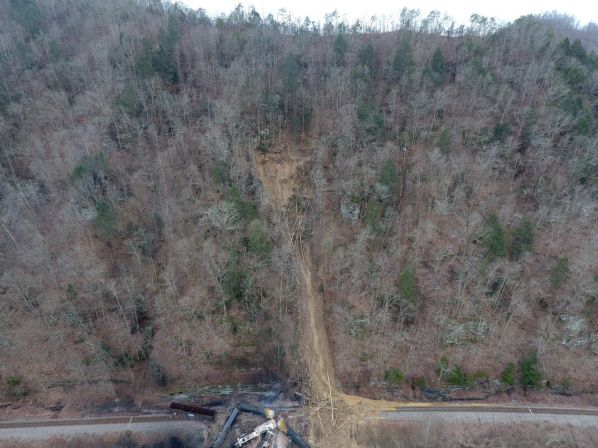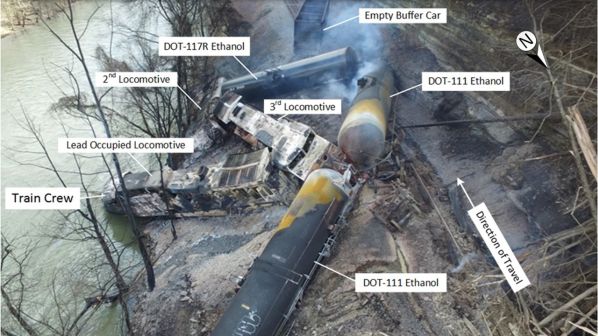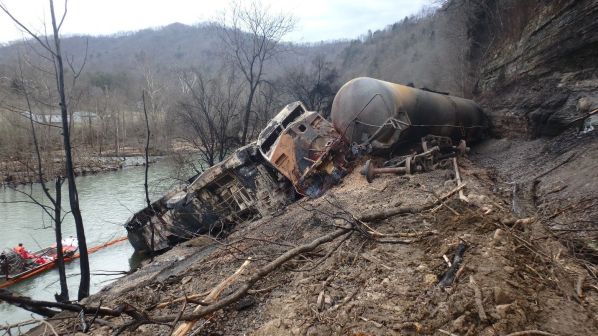THE United States National Transportation Safety Board (NTSB) has issued a safety recommendation to the North American Class 1 railways and the American Short Line and Regional Railroad Association (ASLRRA) highlighting the importance of maintaining dynamic weather alert criteria in rail operations in response to a CSX Transportation derailment that resulted in the release of hazardous materials.
The derailment in Draffin, Kentucky, on February 13 2020 followed heavy rainfall. However, an investigation has found that the weather alert criteria did not account for the potential risks from excessive rainfall in the days, weeks or months before the accident.
The high-hazard flammable train carrying denatured ethanol derailed on a CSX Transportation line between a hillside and the Russell Fork River near Draffin. In the two weeks before the derailment, the area received more than 300% of its normal amount of rainfall, while 500-750% of normal precipitation fell in the week before the derailment. This excessive rainfall led to a mudslide that covered the track with mud and debris immediately before the derailment.

The NTSB’s investigation found that the weather alert criteria used by most Class 1 railways and some major short line railways are based on “static criteria,” meaning they only considered the current weather and near-term forecast and not unusual weather conditions in the days preceding the alert. For example, CSX’s static criterion for a flash flood alert was at least 76mm of rain over a period of three hours or less. The criterion did not consider the effects of accumulated rainfall during the previous two weeks.
Other industries use dynamic criteria that consider varied and changing initial conditions for weather alerts. Dynamic criteria account for unusual increases in precipitation or other changes in weather and climate. The alerting criteria levels may change depending on the environment and the impact of previous weather events. For example, dynamic weather alert criteria may take into account ground saturation from previous rainfalls when determining the effect that 76mm of rain falling in an hour could have on a particular geographic area.

Many railways contract with weather service providers for weather information used to alert dispatchers of hazardous weather conditions. As part of their service, the weather service provider collaborates with the railway to develop static criteria for determining when a weather alert is warranted.
This was not an isolated incident, with NTSB investigating five other derailments in the past 40 years where adverse weather conditions, particularly rainfall, affected railways’ infrastructure and created unsafe operating conditions.
A feature on how infrastructure managers are responding to the growing risks of flooding and washouts will appear in the December issue of IRJ.

